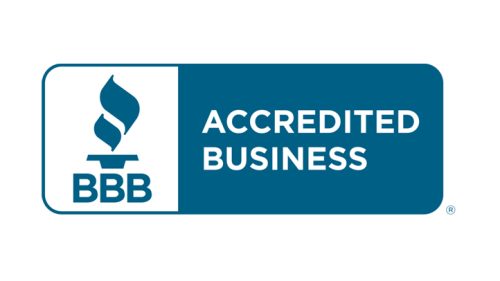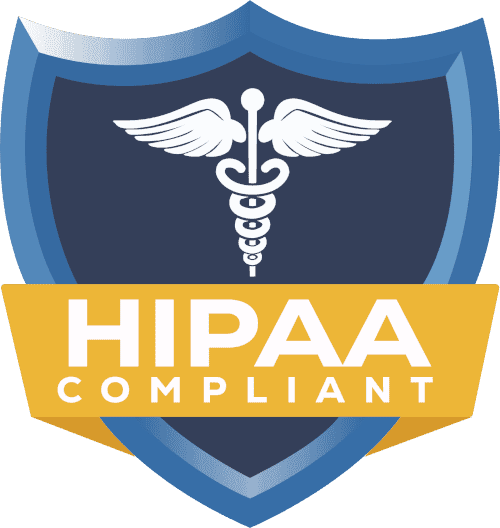Telehealth Credentialing Requirements: A Complete Guide for Providers

Telehealth credentialing is as important as any other practice. Credentialing is the main and first step for telemedicine. As it continues to transform the delivery of medical care, credentialing maintains high standards of quality, safety, and compliance. It checks a provider’s licenses and certificates, including their schooling, training, licensing, and experience. The process makes sure telehealth practitioners meet all state, federal, and payment standards. Getting the correct credentials is essential for both patient trust and career success. This detailed blog covers Telehealth Credentialing Requirements: A Complete Guide for Providers.
What Is Telehealth Credentialing?
Telehealth credentialing involves reviewing a healthcare provider’s qualifications. This includes checking their licenses and work history and confirming they can provide treatment. It reviews your education. It checks your training and licenses. It looks at your work history. It also considers your criminal background, just like an in-person application. This process makes sure that patients are protected, that the law is followed, and that they get the best care possible.
Telehealth credentialing ensures telehealth providers follow the rules in their field. This could involve state licensing registries. It may also include HIPAA privacy rules. Additionally, there are the rules of insurance companies. The virtual healthcare industry is growing fast. This is important. Many places let qualified doctors offer telehealth services. Insurance companies will cover these services. Providers might not work in certain areas. Their claims could be denied. This happens if they lack the right qualifications.
Core Telehealth Credentialing Requirements
The following list outlines specific telehealth licensing requirements.
Proof of Professional Licenses
Telehealth practitioners need to have valid and current licenses according to the state requirements where their patients reside. To stay current, you need to renew these licenses before they run out.
Education and Training Verification
Telehealth credentialing involves checking a few key things. First, the person must have a medical degree. Next, they need to have completed their residency. Board certifications are also required. Finally, they should have specialty-specific training.
DEA Registration for Prescribing
For telehealth provision, especially prescriptions, you must register with the Drug Enforcement Administration (DEA). You also need to follow federal rules for telehealth prescriptions.
Malpractice Insurance Coverage
Providers must have their professional liability or malpractice insurance current. Some insurers say that virtual care needs specific policy endorsements.
State-Specific Licensing Rules
It’s challenging for providers to stay compliant with the laws of all the states since each state has its own set of restrictions governing telehealth licenses. Telehealth providers must have full licenses in the states where they work. Some states let providers from neighboring states get licenses easily, while others join regional licensing compacts.
The Interstate Medical Licensure Compact (IMLC) lets doctors get licenses in more than one state; however, the rules in each state are different. The Psychology Interjurisdictional Compact (PSYPACT) gives mental health professionals the same advantages, while nursing compacts make it easier to operate in more than one state.
Some states have varied rules for short or emergency telehealth services. Some allow for more capabilities during public health crises, while others go back to the rules that were in place before the epidemic. To be competitive, providers need to keep up with these changing needs.
Telehealth Provider Enrollment Requirements for Insurance Networks
For payer enrollment in insurance networks, there are the following requirements:
1) Overview of Telehealth Licensing Requirements
Telehealth providers need to prove that they meet both conventional licensure criteria and telemedicine-specific requirements to get enrolled and paid by insurers for telehealth services. Medicare, Medicaid, and commercial insurance plans are all major payers that have restrictions concerning who may be certified to operate in telehealth.
2) Medicare Telehealth Criteria and Recent Legislative Changes
Providers must be registered with Medicare and meet certain physical and structural requirements to utilize Medicare telehealth. But improvements to the law have made it easier for more people to get telehealth benefits. Providers need to be aware of the telehealth services Medicare pays for and follow any regulations that apply to starting locations.
3) Variability of Medicaid Telehealth Coverage Across States
Medicaid programs are not the same in every state. Some provide comprehensive coverage for telehealth, while others simply offer a few extras. Many state Medicaid programs have separate methods for signing up video providers and traditional providers.
4) Commercial Payers’ Requirements for Telehealth Services
Commercial payers want to see verification of telehealth platform security, HIPAA compliance in virtual care, and technical standards as part of the licensing process. Some payers make network participants take specified telemedicine training or certification courses.
5) Essential Documentation for Telehealth License Applications
As part of the license application process, you generally have to provide proof of telehealth-specific rules and processes. Furthermore, provide documentation required for technological platform specifications, data security measures, and patient privacy rights. Payers may also want to see confirmation that there are backup methods in place for getting assistance with technology and interaction.
Telehealth and CAQH – Creating and Maintaining an Accurate Profile
The Council for Affordable Quality Healthcare (CAQH) ProView is the main website that provides information on how to become a provider. This makes it easy for numerous donors to apply. For client enrollment to run successfully, telehealth providers must keep their CAQH profile set up.
Following are some crucial CAQH telehealth profile setup requirements.
- Demonstrates unique telehealth training and skills.
- Lists states offering telehealth services and complete license data.
- Providers should have relevant technological platform certifications.
- The site should be updated as licenses expire, certificates change, and practices change.
- Provider profiles should be precise for payers to identify eligible individuals.
- CAQH has added new sections for telehealth practice information, including technological platform details, licensing in multiple states, and available virtual treatment forms.
HIPAA & Compliance Considerations – Security and Privacy Requirements
When using telehealth, you need to be particularly careful about technological security, how data is sent, and keeping patient privacy safe to comply with the Healthcare Insurance Portability and Accountability Act (HIPAA). Because telehealth is digital, it has its own legal problems that businesses need to deal with.
- Need for a BAA: A Business Associate Agreement (BAA) is necessary when using third-party healthcare platforms, cloud storage services, or communication tools.
- Security in Telehealth: Telehealth systems require comprehensive security measures for video calls, including secure data storage and an audit trail to ensure compliance with regulations.
- Ensure HIPAA Compliance in Virtual Care: Providers must verify that their platforms meet HIPAA standards and implement essential security measures for technology.
- Telemedicine Agreement: When a patient agrees to telemedicine, the authorization process must include information about how treatment will be given online, how data will be kept safe, and any possible technical problems.
- Consent Requirements: In many places, you need to give written consent for telehealth services.
- Information Standards: They also establish guidelines for sharing information about the service and potential risks.
- Data Breach Laws Handling: The rules about reporting data breaches apply to telemedicine in the same way they do to regular healthcare settings.
- Establishing Incident Response Procedures: Providers need to make rules for how to handle technology-specific incidents, such as platform failures, unauthorized access, and communication interception.
Multi-State Telehealth Licensing Challenges – Navigating Telehealth Across Borders
When telehealth is implemented across state lines, numerous challenging legal issues must be addressed and monitored at all times. The healthcare procedures that occur within the borders of each state are the responsibility of the state. This suggests that there are numerous state telehealth regulations that occasionally conflict and do not always make sense.
Telemedicine Services Delivery in Different States
- Some states require providers to have licenses in the state where the patient resides, assuming services occur at the patient’s home.
- Some states allow providers to work under their primary telehealth regulations by state.
- Prescription writing for illegal medications is challenging in some states.
- Providers need to understand state pharmacy requirements, prescription writing, and patient identification.
- Malpractice insurance protection is crucial for providers operating in multiple states.
- Record-keeping regulations vary across states, with specific requirements for virtual meetings, technological platforms, and patient consent.
Timeline & Common Delays in Credentialing – What to Expect?
Credentialing for telehealth providers takes longer than regular in-person credentialing since it needs more documentation and might be difficult to do in more than one state. The licensing procedure should take between 90 and 180 days, although the wait periods might vary a lot based on the provider’s practice and the restrictions provided by the government. However, you must keep the following points in mind while applying for telehealth credentialing.
Missing or incomplete multi-state telehealth licensing papers, not having adequate training records for telehealth, and challenges with authenticating the technological platform are all common causes for delays.
Payer panel credentialing for telehealth may take a long time, particularly for providers who wish to join networks in more than one state or with more than one insurance plan. Each provider has its own dates and may require more documents than the usual qualifications.
If someone has worked in more than one state, it may be harder to do a background check for telehealth regulations by state since it needs people to work together across state lines and might take longer to verify information.
Tech platform compliance certification is delayed by new credentialing body methods for telehealth platform safety and efficacy. Newer or less popular systems may delay evaluations.
Best Practices to Meet Credentialing Requirements Faster
- Prepare Ahead: You should start acquiring licenses in more than one state as soon as possible.
- Identity Management Systems: Use systems to keep track of provider names to speed up the healthcare credentialing process.
- Keep Records Organized: Make sure you have a complete system for keeping track of your passwords, including when they need to be changed, when they expire, and whether they need to be updated.
- Standardized Documentation: Make sure that all practice states have the same high-quality documentation procedures. That way, you won’t have to modify anything depending on where you are.
- Digital Backup: Make digital copies of all your passwords and back them up every so often to make sure you don’t lose any information while you’re applying.
- Consult Experts: Talk to advisors or qualified specialists like Credex Healthcare to learn what telemedicine needs are and how to fill out lengthy documents from various states.
- Consider Regional Licensing Compacts: Regional licensing compacts may help you keep track of your credentials and make it simpler to receive a license.
- Stay Compliant: Always have mechanisms to keep track of compliance that are up-to-date and may adapt as new rules go into effect in all areas of practice.
- Set up Notifications: To keep up with changing regulations, sign up for alerts from state medical boards, payers, and virtual regulatory bodies.
- If you want to speed up the telehealth credentialing process, consult the expert at Credex Healthcare.
Conclusion – Staying compliant while growing your telehealth practice
Telehealth credentialing is significantly difficult, but it’s also an essential step towards delivering effective virtual treatment. You can provide safe, legal, and reimbursable virtual treatment if you fulfil all the criteria for telehealth credentialing. The healthcare credentialing process includes receiving a license, setting up CAQH, payer panel credentialing telehealth, and following HIPAA. Providers that invest in extensive certification procedures are setting themselves up for long-term success in the healthcare profession, which is continually evolving.
As telemedicine grows, rules will likely become more uniform. Providers today have to cope with a tough scenario, but they also must plan for future development. Getting the correct credentials is worth it since it makes you safer legally, pays better, and helps you take better care of your patients. Credex Healthcare provides comprehensive and fast telehealth credentialing across all states of the USA. Telehealth providers can rely on our end-to-end credentialing and billing services.
Frequently Asked Questions
How long does telehealth credentialing usually take?
Depending on the state and payment requirements, it might take anywhere from one to four months.
Can I offer telehealth services in multiple states with one license?
Not at all. You need to be qualified in every state where your customers are if they are not in the IMLC’s service region.
Is CAQH mandatory for telehealth credentialing?
Yes, most businesses require a CAQH document to confirm the service.
What happens if I start telehealth services without completing credentialing?
You might have your claim turned down, get fined, or even lose your license.



















